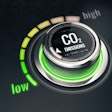
Current eligibility criteria for CT lung cancer screening from the U.S. Preventive Services Task Force (USPSTF) do not account for racial differences -- leaving behind a large proportion of African American smokers who would benefit from the test, say Tennessee researchers in an article published online June 27 in JAMA Oncology.
Multiple studies have shown that African American smokers have a substantially higher risk of lung cancer than white smokers, despite smoking fewer cigarettes per day and having a lower pack-year smoking history. However, many CT lung screening guidelines set minimum age and smoking history requirements for screening without considering racial differences in smoking patterns, noted first author Melinda Aldrich, PhD, and colleagues from Vanderbilt University Medical Center.
As part of the ongoing Southern Community Cohort Study, the researchers evaluated the efficiency of using USPSTF screening guidelines in a low-income cohort consisting of predominantly African Americans (67%). The USPSTF recommends screening individuals between ages 55 and 80 with a smoking history of at least 30 pack-years.
Among 48,364 current or former smokers, the proportion of African American smokers who met the USPSTF eligibility criteria for CT lung screening was roughly half that of white smokers. This disparity in screening eligibility also applied to the subcohort of white and African American patients diagnosed with lung cancer.
| Comparison of eligibility for CT lung cancer screening by race | ||
| White smokers | African American smokers | |
| Proportion of individuals eligible for CT lung screening per USPSTF criteria | 31.4% | 17.4% |
| Proportion of cancer patients eligible for CT lung screening per USPSTF criteria | 56.5% | 32.2% |
| Median pack-year smoking history of patients diagnosed with lung cancer | 48 pack-years | 25.8 pack-years |
| Median age at lung cancer diagnosis | 64 years | 59 years |
The predominant reason that such a high percentage of African American smokers were deemed ineligible for CT lung screening was that they fell short of the 30 pack-year requirement, according to the authors. The proportion of African American smokers who did not meet the minimum smoking history needed for screening eligibility was roughly threefold that of white smokers.
In addition, the likelihood of developing lung cancer before reaching the minimum age requirement for screening was almost five percentage points higher for African American smokers than for white smokers (p < 0.03).
"Existing USPSTF lung cancer screening guidelines do not appear to be optimized for African American smokers and may result in a widening of racial disparities in late-stage diagnosis, potentially leading to higher mortality and worse outcomes among African American persons with lung cancer," Aldrich and colleagues wrote. Yet simple adjustments to the USPSTF guidelines could help mitigate these disparities, they continued.
For example, the researchers showed that modifying the screening criteria to cover African American smokers with a history of 20 pack-years would increase the proportion of African Americans eligible for screening to 28.5%, compared with 17.4% for the current 30 pack-year requirement. Lowering the minimum screening age to 50 years from 55 years for African Americans would boost their eligibility even further.
What's more, such revisions to the eligibility criteria would improve the sensitivity of CT lung screening for this cohort and narrow the gap between African American and white smokers, the authors noted.
"Current USPSTF lung cancer screening guidelines may be too conservative for African American smokers. The findings suggest that race-specific adjustment of pack-year criteria in lung cancer screening guidelines would result in more equitable screening for African American smokers at high risk for lung cancer," they concluded.




















